A Yukon ghost town comes back to life
Almost no one has lived at Fort Selkirk year-round for more more than half a century,
By Justine Davidson on July 13, 2011
FORT SELKIRK – Almost no one has lived at Fort Selkirk year-round for more more than half a century, but the former trading post at the confluence of the Pelly and Yukon rivers is still home to many – people who grew up here, whose families have lived and traded here for millennia, and those who have worked to restore and promote this historic settlement over the past 40 years.
For thousands of years before Robert Campbell established Fort Selkirk as a Hudson's Bay Company trading post in 1852, the First Nations people of the Yukon and Alaska used this site as one of the fulcrums of their well-established trade routes.
A hundred years before the arrival of European traders and settlers, Chilkat people came here with metal tools obtained from Russian traders on the coast, much to the delight of their strongest trade partners, now known as the Selkirk people.
When Campbell arrived, he was well-received by the Selkirk people, who encouraged him to trade his heavy boots in for light, soft moccasins.
"The people of the Selkirk First Nation welcomed the Europeans and helped them,” Selkirk chief Kevin McGinty said Tuesday to a crowd of more than 100 people who were gathered at the fort to celebrate its recognition as an official historic site.
Campbell's fort – and the competition it brought – were not welcomed by the coastal Chilkat people, however. They attacked and looted the fort in the summer of 1852 when the protective families of Selkirk were on the land away from the fort.
The settlement was rebuilt about 40 years later, and became a major supply point along the Yukon River until river travel was replaced by asphalt in the 1950s.
Today, the site provides shelter to river travellers, and a sense of home to members of the Selkirk First
Nation. Some of them still bear the name Campbell, given to Chief Hanan in gratitude for saving the
Hudson's Bay man after he was literally set adrift by the Chilkat offensive.
"And we still welcome all those who come here, from all over the world,” McGinty said.
And indeed, the hereditary chief was speaking to people from as close as Pelly Crossing, where the
Selkirk First Nation is now based, and from as far away as Australia and New Zealand, countries which supply a seemingly endless stream of paddlers and adventurers who rest here on the journey up the Yukon River.
Some of those who came here Tuesday, such as Ione Christensen and Mariah Van Bibber, grew up in Fort Selkirk.
From 1935 until 1949, Christensen (nee Cameron) was the only child in a community of about 12 non-native settlers. The daughter of the post's RCMP officer and nurse, the young Ione was treated as everyone's child.
"I was raised by adults,” Christensen remembered yesterday. "Everybody treated me as if I belonged to them. They'd do all kinds of fun tricks on me. It was wonderful.”
Her father was in charge of patrolling the river from Whitehorse to Dawson City and up the Pelly River, in a canoe on the warmer months, and on a dog sled when the river was frozen.
The European settlers and the First Nations people lived separate but intertwined lives, with the Camerons and their neighbours living year-round in their log houses, and the First Nations people living in tents, constantly moving with the seasons, the traplines, the berries.
The young Ione wasn't allowed to play with the native children out of her mother's fear for tuberculosis, but she grew up understanding her neighbours were a vital part of her existence.
"Everybody had a lot of respect for each other, and everybody was dependent on one another,” she said.
"Whenever dad went out on patrols he always took a First Nations person with him as a second person to help him.”
Over the years, the separate spheres of life have come closer and closer, culminating in this week's unveiling of a plaque commemorating Fort Selkirk as an official historic site.
The restoration of a dozen of Fort Selkirk's buildings represents the longest standing example of collaboration between First Nation and territorial governments, Tourism and Culture Minister Elaine Taylor said Tuesday, McGinty at her side.
Among the many people recognized for their work in preserving, restoring and advocating for Fort Selkirk was Danny Roberts.
Roberts was the last person to live full-time at Fort Selkirk. He moved there when the fort was a bustling town in the 1940s and '50s, and earned his money working on and cutting wood for the paddlewheelers which plied the waters of the Yukon.
By the mid-1950s, the town was all but abandoned, as people began using the newly built Alaska
Highway and the big river boats stopped running.
But Roberts stayed with his wife Abby, piloting river barges, working at the Pelly River Ranch about 15 kilometres upriver, trapping, hunting and fishing.
The Roberts also took care of the homes and belongings left behind, and were passionate about maintaining the rich history of the Yukon's first mixed-race settlement.
Danny would take visitors from building to building telling stories of the families who once lived here, and weaving in the long history of his own people.
In 1980, he was officially hired by the Yukon's historic sites branch as a caretaker and interpreter, a job he did for 20 years, until his death in August 2000.
"He told his family to always take care of this place,” Freda Alfred, the site's current interpreter and Roberts' niece, recalled yesterday. The job of interpreter passed from Danny to his sister, Alfred's mother, and then to Alfred, who hopes it will stay in the family.
"I tell my granddaughter stories. I bring her here with me to listen and to learn about the history. When I learn something new, I pass it on to her, so she will remember.”
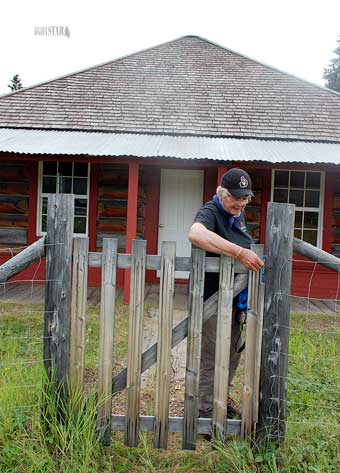
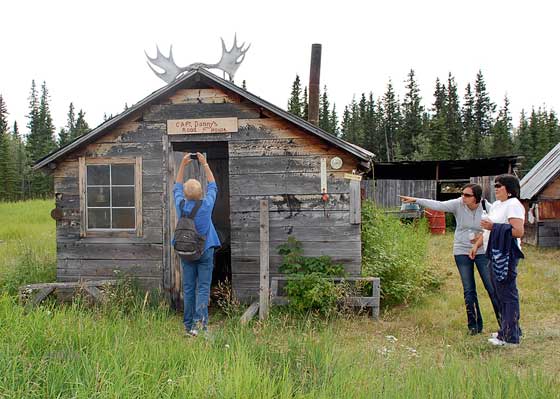
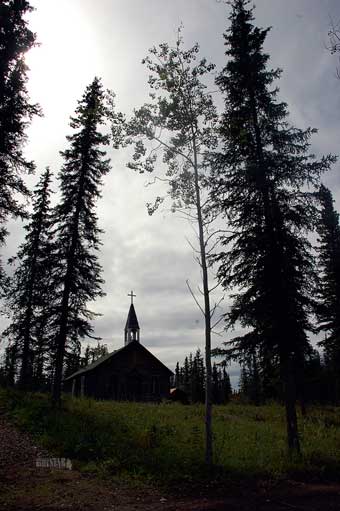
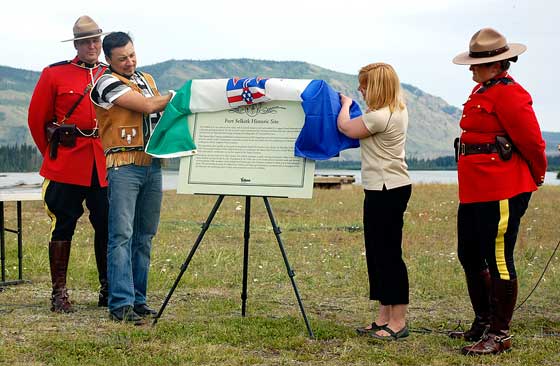
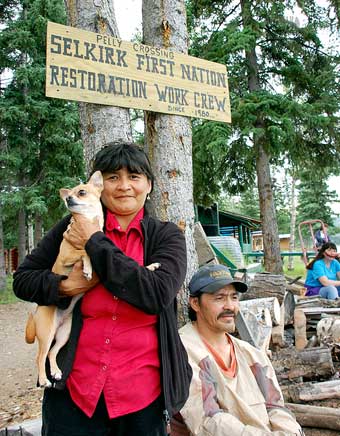

Comments (1)
Up 1 Down 0
Dave Sharp on Jul 13, 2011 at 6:03 pm
Nice article.